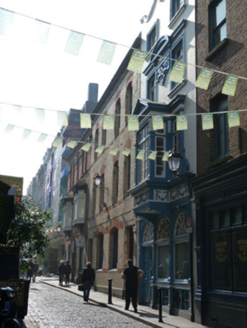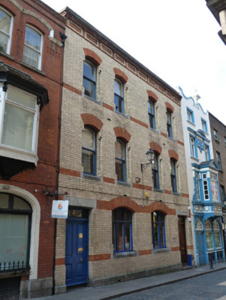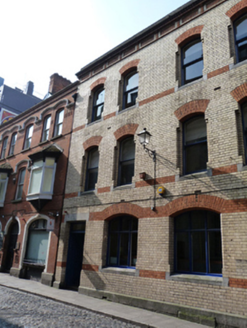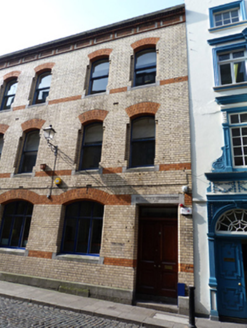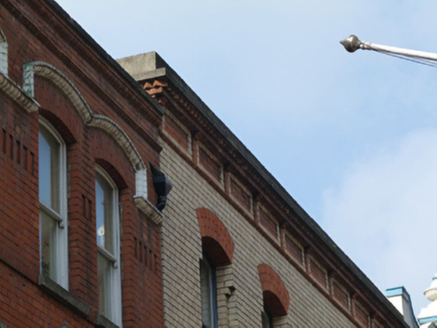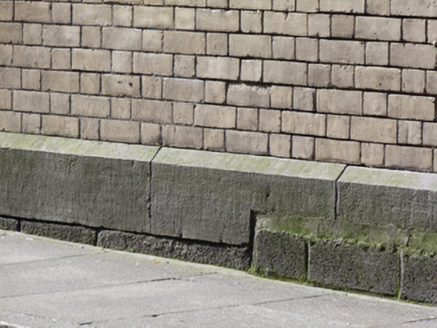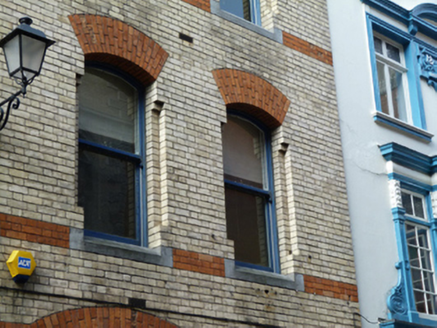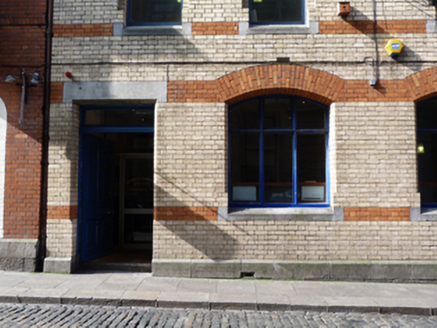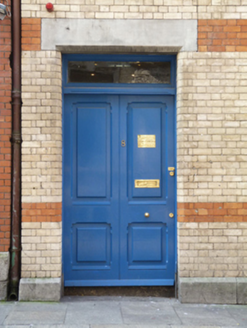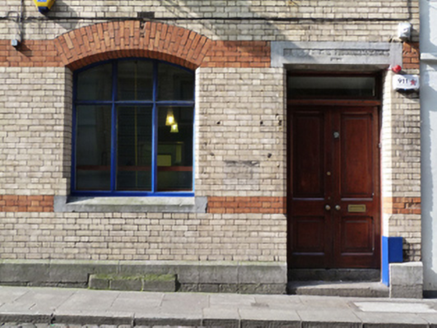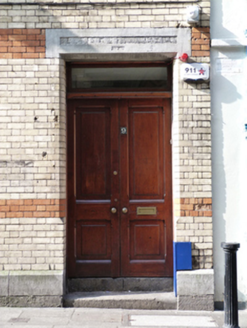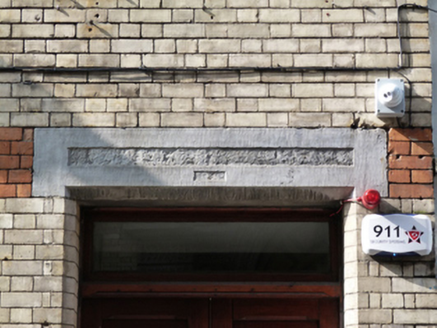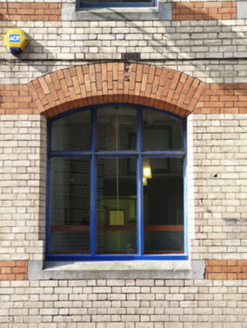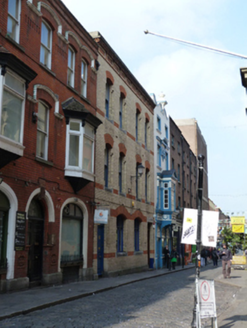Survey Data
Reg No
50020192
Rating
Regional
Categories of Special Interest
Architectural, Artistic
Original Use
Office
In Use As
Office
Date
1870 - 1890
Coordinates
315805, 234144
Date Recorded
18/03/2015
Date Updated
--/--/--
Description
Attached pair of two-bay three-storey offices, built c.1880. U-plan hipped slate roof having yellow brick chimneystacks, hidden behind cut granite parapet with polychrome brick panels, cogged brick and cut granite cornice. Yellow brick walls, laid in Flemish bond, having dressed limestone plinth course and red brick platbands. Segmental-headed window openings, with stepped yellow brick reveals, flush chamfered limestone sills, red brick voussoirs, and one-over-one pane timber sliding sash windows to upper floors. Segmental-headed window openings, chamfered yellow brick reveals, red brick voussoirs, flush chamfered limestone sills and timber fixed-pane windows with timber mullions to ground floor. Square-headed door openings having chamfered reveals, flush chamfered limestone lintels, granite steps and plain overlights with timber panelled door to south and double-leaf timber panelled door to north. Situated to west side and north of Anglesea Street.
Appraisal
This street was named after Arthur Annesley, Earl of Anglesea, who held a substantial parcel of land here in the late seventeenth century. It was largely developed by the mid-eighteenth century and appears on John Rocque’s 1756 map of Dublin. A substantial phase of rebuilding took place in the late nineteenth century, stimulated by the construction of the new stock exchange building on the east side of the street in 1879. The Italianate style of this pair is characteristic of the office buildings that sprung up around this time, and it is likely that it served administrative functions associated with the exchange. The use of polychrome brick detailing provides tonal variation to the pale yellow brick of the façade, making this building a striking addition to the streetscape, as well as placing it within a late nineteenth century context.
